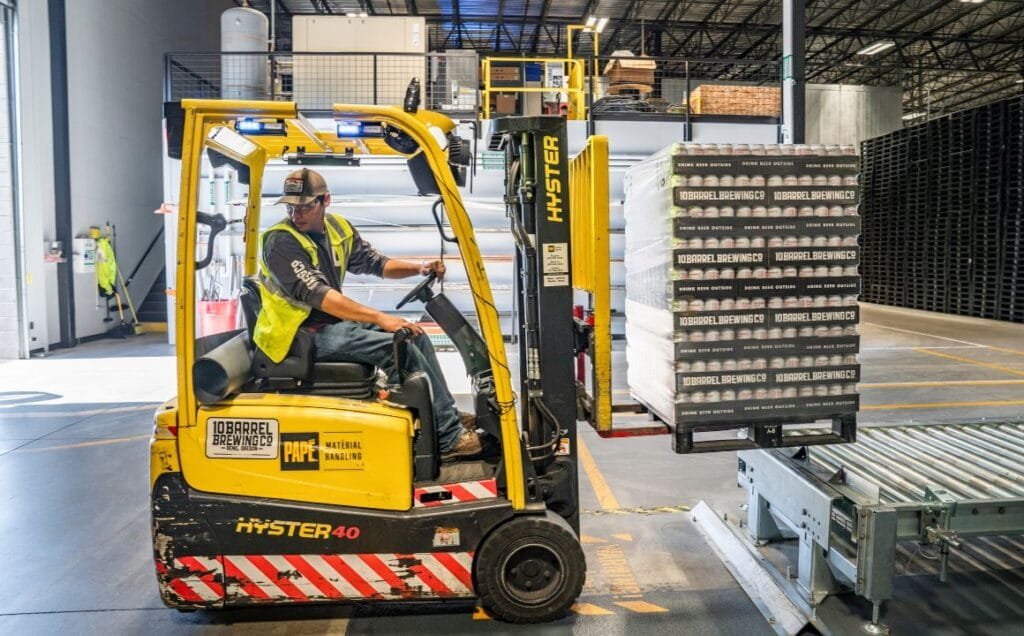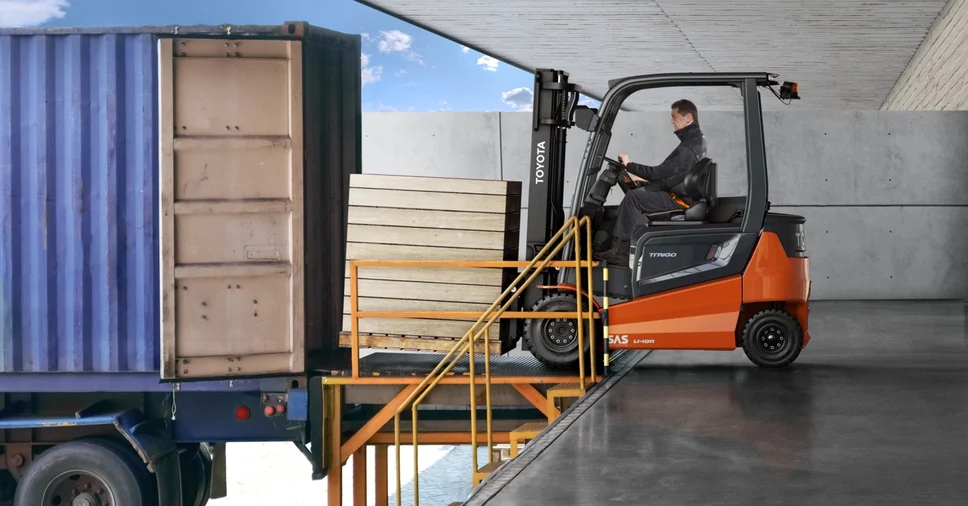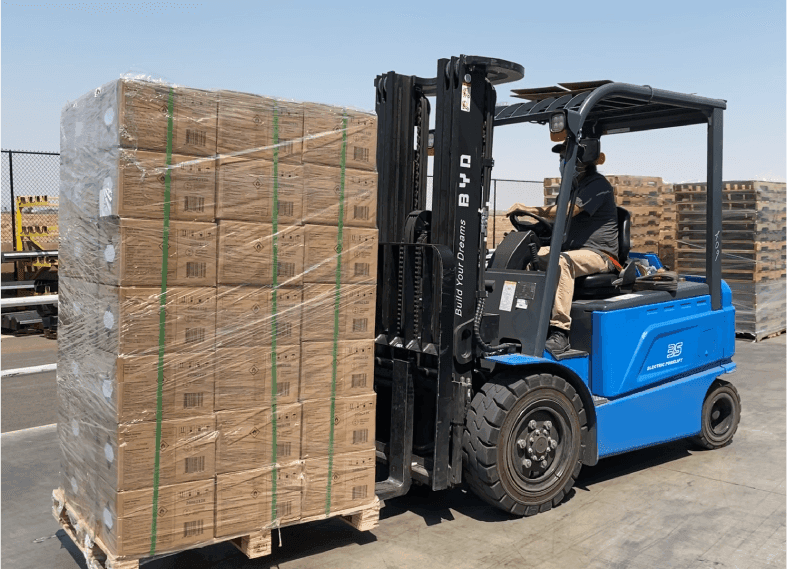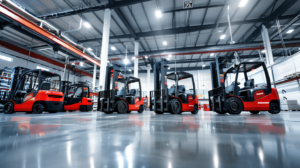Introduction to Electric Forklifts
Definition and Key Features
Electric forklifts are material-handling machines powered by rechargeable batteries instead of internal combustion engines. These machines are commonly used in indoor operations where zero emissions, quiet operation, and compact maneuverability are vital. Some of their distinguishing features include low maintenance requirements, consistent power delivery, and the use of lithium-ion or lead-acid batteries.
Comparison with Internal Combustion Forklifts
Compared to traditional forklifts that run on gasoline, diesel, or propane, electric forklifts offer cleaner energy usage and smoother handling. While internal combustion models are often preferred for heavy-duty outdoor applications, electric forklifts shine in enclosed environments and sectors where environmental compliance is crucial. The lack of fumes, lower noise levels, and reduced fuel costs make them a smart long-term investment for many businesses.

Why Electric Forklifts are Gaining Popularity
Environmental Benefits
With global emphasis on reducing carbon footprints, electric forklifts are becoming an integral part of green logistics. These vehicles produce zero on-site emissions, making them ideal for LEED-certified buildings and environmentally conscious companies.
Operational Cost Savings
Though the upfront cost of an electric forklift may be higher than its diesel counterpart, the lifetime savings are significant. Lower energy costs, fewer moving parts, and minimal maintenance lead to reduced operational expenses. Additionally, government incentives for clean energy adoption further sweeten the deal for buyers.
Technological Advancements
Modern electric forklifts come equipped with smart sensors, ergonomic controls, and real-time diagnostics. Battery technology has also improved, with faster charging and longer lifespans. These enhancements make electric forklifts more efficient and desirable across many industries.

Primary Buyers of Electric Forklifts
Warehouse and Distribution Centers
One of the largest consumer segments, warehouses and distribution hubs invest heavily in electric forklifts due to their clean operation and quiet performance. These environments demand low emissions and efficient maneuvering through tight aisles.
Retail Chains and Big Box Stores
Large retailers like Walmart and Target operate massive inventory centers where electric forklifts support daily stocking and logistics. They prefer electric units to comply with in-store air quality standards and streamline sustainability goals.
Manufacturing Companies
Factories dealing with sensitive electronics, pharmaceuticals, or consumer goods favor electric forklifts for their non-polluting and smooth operation. It helps maintain clean production lines and minimizes risks of contamination.
E-commerce and Logistics Companies
Giants like Amazon and UPS have revolutionized fast delivery. Their fulfillment centers rely on electric forklifts for quiet, efficient, and scalable logistics support, especially in urban settings where emissions regulations are tighter.
Food and Beverage Industry
Perishable goods require climate-controlled environments. Electric forklifts are preferred in cold storage or food processing facilities since they don’t emit fumes that could compromise food safety or storage conditions.
Hospitals and Healthcare Facilities
Medical centers use compact electric forklifts and pallet jacks in logistics, inventory management, and equipment handling due to their emission-free nature and quiet performance.
Universities and Research Institutions
These institutions use electric forklifts for campus maintenance, lab logistics, and materials transport, often driven by sustainability commitments and educational green initiatives.

Government and Municipal Buyers
Sustainability Initiatives
Many local governments are purchasing electric forklifts as part of broader climate action plans. These include reducing emissions from public operations like waste management, parks maintenance, and building services.
Fleet Electrification Programs
Electric forklift adoption is frequently bundled into larger fleet electrification initiatives. City and state agencies may receive grants or subsidies for shifting to electric-powered vehicles, including forklifts used in maintenance yards and depots.
Small Businesses and Startups
Affordability and Leasing Options
Small business owners and startups are increasingly turning to electric forklifts, thanks to flexible leasing and rental models. These options lower the barrier to entry while providing access to clean, efficient machinery.
Use in Niche Applications
From boutique breweries to solar panel manufacturers, electric forklifts find their place in niche settings where clean energy and precision handling are key.
Geographical Trends in Electric Forklift Adoption
North America
In the U.S. and Canada, electric forklift usage is growing rapidly, especially in California and other states with strict emission regulations. Government rebates and urban warehousing needs drive adoption.
Europe
European Union regulations and carbon neutrality goals have led to a strong market for electric forklifts in countries like Germany, France, and the Netherlands. Indoor air quality standards further encourage usage in logistics and retail sectors.
Asia-Pacific
China and Japan are leading electric forklift production and usage. Government-backed industrial reforms, rapid urbanization, and increasing labor costs support this transition. ASEAN nations are catching up, especially in export-driven industries.

What Influences Purchase Decisions?
Total Cost of Ownership
Buyers evaluate not just the purchase price but also lifetime maintenance, fuel, insurance, and downtime. Electric forklifts often score higher in terms of cost efficiency over time.
Availability of Charging Infrastructure
The ease of installing or accessing charging stations can influence purchase decisions. Fast-charging and battery-swapping options make electric forklifts more attractive in busy environments.
Brand and Dealer Reputation
Reliable brands with good after-sales service and training programs often sway purchasing decisions. Buyers look for warranties, parts availability, and robust service networks.
Electric Forklifts in Green Building Certifications
LEED and Other Standards
Electric forklifts contribute toward points in green building certifications such as LEED (Leadership in Energy and Environmental Design). Organizations seeking certification often prefer electric equipment to comply with sustainability benchmarks.
Future Outlook for Electric Forklift Buyers
Market Projections and Trends
The global electric forklift market is expected to grow exponentially, driven by stricter regulations and industrial automation. By 2030, electric forklifts could dominate over 70% of the total forklift market share.
Innovations Driving Demand
Emerging technologies like autonomous forklifts, telematics, and AI-driven fleet management systems are creating a demand for smarter, electric-powered solutions. These advances are reshaping buyer profiles and operational strategies.

FAQs
1. What industries commonly use electric forklifts?
Industries such as warehousing, manufacturing, retail, food processing, healthcare, and e-commerce are the most common users.
2. Are electric forklifts suitable for outdoor use?
While primarily designed for indoor use, many models with rugged tires and weatherproofing are now suitable for light to moderate outdoor operations.
3. What is the lifespan of an electric forklift battery?
Depending on usage, a battery can last between 5-7 years or around 1,500-2,000 charge cycles.
4. Do electric forklifts require less maintenance?
Yes, they have fewer moving parts and no need for oil changes, which translates to lower maintenance costs.
5. How long does it take to charge an electric forklift?
Standard charging takes 6-8 hours, while fast-charging options can cut this time significantly.
6. Can small businesses afford electric forklifts?
Yes, with rental options, leasing plans, and used units available, small businesses can afford electric forklifts without heavy upfront investment.
Conclusion
The market for electric forklifts is no longer niche. From sprawling warehouses and cutting-edge hospitals to government facilities and local startups, electric forklifts are being embraced across the board. Buyers are driven by environmental goals, economic benefits, and evolving operational needs. As technology progresses and infrastructure improves, electric forklifts will likely become the new standard in material handling.




